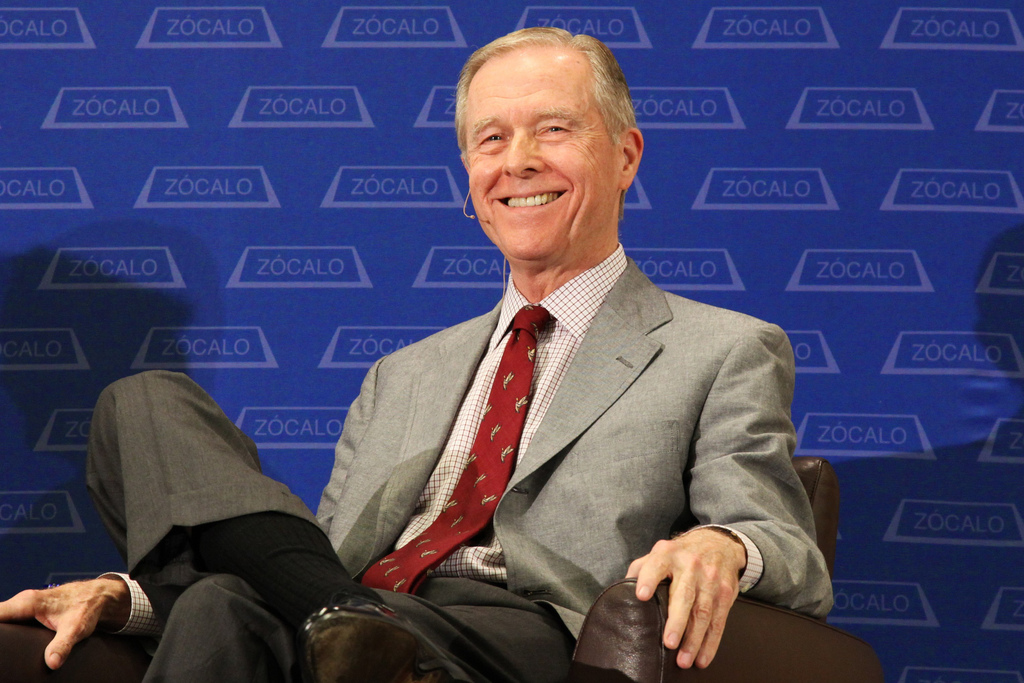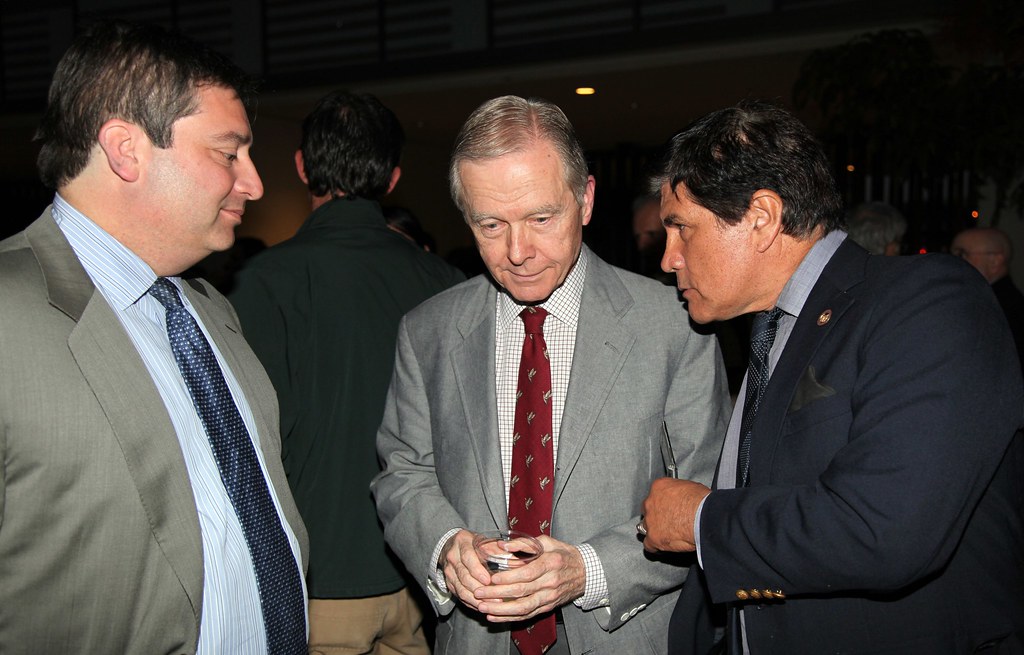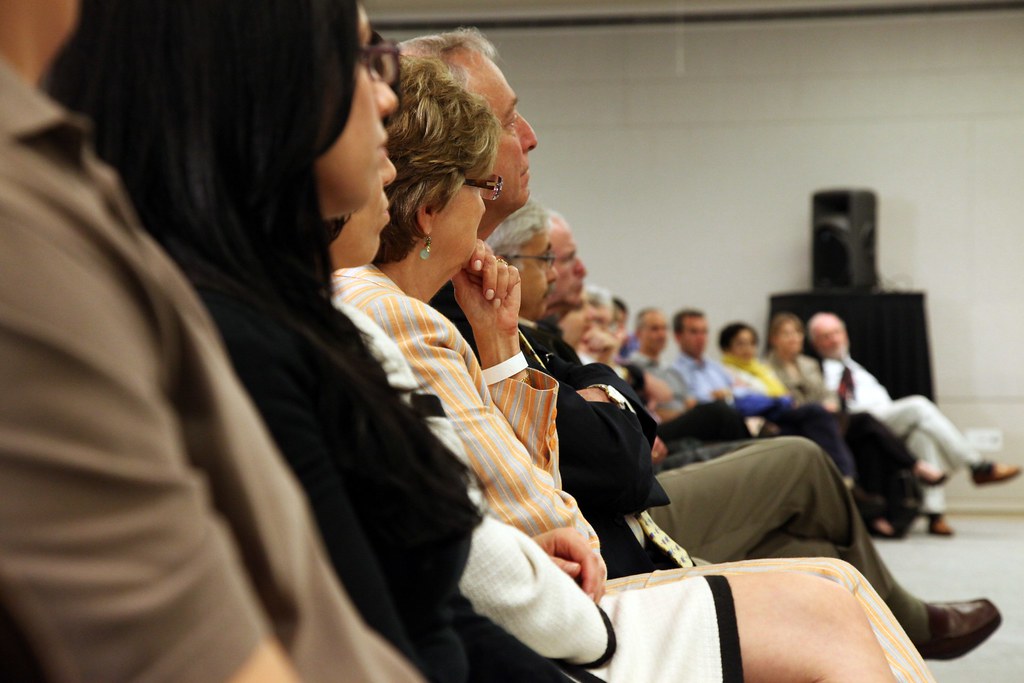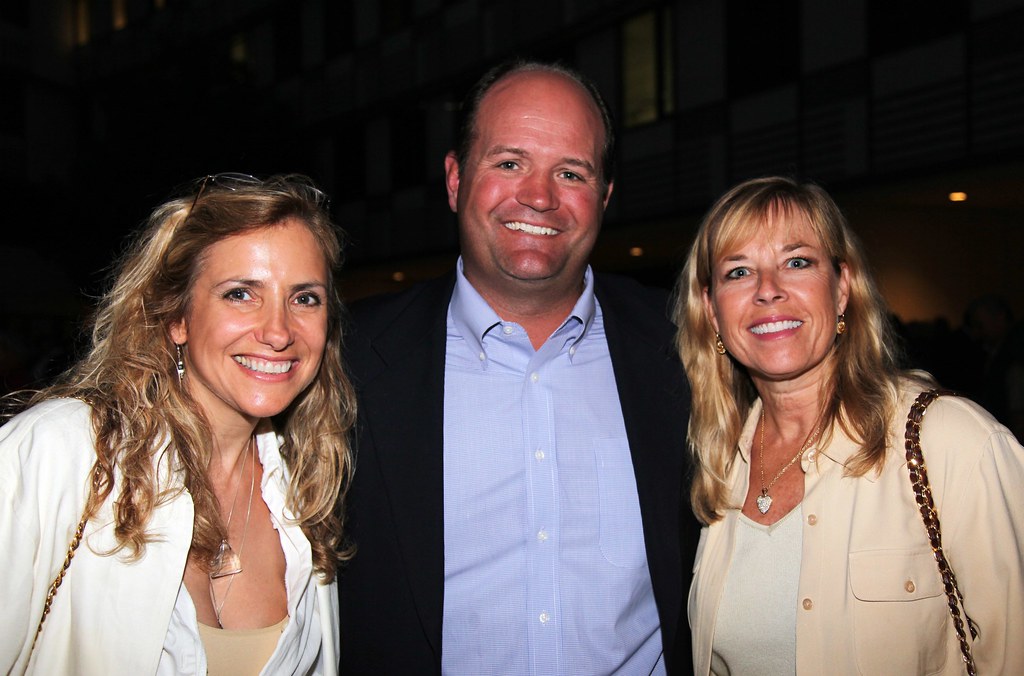
Joe Mathews admitted that, even as a born-and-raised Californian, he had but a “newspaper context paragraph understanding” of Pete Wilson’s governorship until recently.
“Not all of those newspaper paragraphs were kind or necessarily accurate,” Mathews said, adding that those who watched Wilson’s years in office closely – and even fought against him during those years – found him to be, contrary to the newspaper-paragraph take, a successful governor. As one senior official in the California Teachers Association told Mathews, “Deals stuck, important issues were resolved, and he left the state with a balanced budget.”
Before a full house at RAND in Santa Monica, Mathews chatted with the former governor about how exactly Wilson managed, when confronted with a budget situation as dire as the one the state faces today, to cut spending, win legislative majorities, and pass balanced budgets. California, as Wilson put it, is not out of control: “Difficult? Yes. Challenging? Very. But not ungovernable.”
Timing is everything…
 Wilson began his gubernatorial career at an inopportune moment. “Timing is everything. Mine was rotten,” Wilson deadpanned. In the four months before his election, the state’s revenues had declined by $400 million. A month after his election, his financial director greeted him with an expression that, he said to a laugh, “had all the warmth and cheer of an open grave.” He told Wilson the state faced a revenue gap of at least $5 billion. It doubled by April, and it would total $14.3 billion by the time Wilson signed his first budget in July 1991, just a few days past the now routinely missed constitutional deadline. The gap in the general fund budget was proportionately bigger than the one the state faces today, Mathews noted.
Wilson began his gubernatorial career at an inopportune moment. “Timing is everything. Mine was rotten,” Wilson deadpanned. In the four months before his election, the state’s revenues had declined by $400 million. A month after his election, his financial director greeted him with an expression that, he said to a laugh, “had all the warmth and cheer of an open grave.” He told Wilson the state faced a revenue gap of at least $5 billion. It doubled by April, and it would total $14.3 billion by the time Wilson signed his first budget in July 1991, just a few days past the now routinely missed constitutional deadline. The gap in the general fund budget was proportionately bigger than the one the state faces today, Mathews noted.
Arm breaking, or at least twisting
Wilson offered the crowd a play-by-play of the legislative wrangling over his first budget with then-Democratic legislative leaders Willie Brown and David Roberti. The two offered Wilson, who had proposed a balanced budget achieved through spending cuts, a package of cuts and tax increases. Wilson declined to raise taxes as much as the leaders desired. “He will deny this, I know, but Willie turned to me and said, ‘Run a tab,'” Wilson said to a laugh from the crowd. “I will assume he said that with tongue in cheek.”
Eventually, Wilson’s budget passed. When Mathews asked how he managed to win enough votes, Wilson joked, “I picked the eight smallest guys and one at a time broke their arms.” The next year, faced with a greater revenue gap and a drawn-out budget battle in what he called “the endless summer of ’92,” Wilson did something that’s being discussed now – offer IOUs in lieu of certain payments from the state rather than raise taxes.
Sacred cows
 Though Wilson had managed several spending cuts, he found that “the only thing we had not really touched was education.” Proposition 98 governed education funding by a formula, adjusted according to the level of revenues the state received, Wilson said. With so much of the general fund lost, education funding was low by the formula. But the total amount was still quite high, Wilson said, because the state has historically always dedicated much of its budget to education — according to him, 54% of the budget in the early 1990s went to higher education and K through 14. When his fellow Republicans balked at his proposal to suspend Proposition 98, Wilson explained that he was cutting education “for the same reason that Willie Sutton robbed banks. That’s where the money is.” Wilson ended up raising education spending; Gov. Arnold Schwarzenegger has also pursued a Prop. 98 suspension.
Though Wilson had managed several spending cuts, he found that “the only thing we had not really touched was education.” Proposition 98 governed education funding by a formula, adjusted according to the level of revenues the state received, Wilson said. With so much of the general fund lost, education funding was low by the formula. But the total amount was still quite high, Wilson said, because the state has historically always dedicated much of its budget to education — according to him, 54% of the budget in the early 1990s went to higher education and K through 14. When his fellow Republicans balked at his proposal to suspend Proposition 98, Wilson explained that he was cutting education “for the same reason that Willie Sutton robbed banks. That’s where the money is.” Wilson ended up raising education spending; Gov. Arnold Schwarzenegger has also pursued a Prop. 98 suspension.
Wilson also oversaw a district reapportionment process, aiming to avoid districts that look like “lizards and snakes and belts,” Wilson said, contributing to some more moderates entering the legislature. And he passed term limits, which displeased Brown, who left state office to become Mayor of San Francisco. “I said, ‘Willie, have you ever considered how much you owe me?’” Wilson joked. “‘If it weren’t for term limits and reapportionment, you wouldn’t have this cushy job.’”
Old canards
 That the revenue picture declined further in Wilson’s second year suggested an old truism about California, Mathews noted: that the governor can’t do much about the state economy, given how intertwined it is with national and global economies. Wilson disagreed, saying, “You can do quite a lot.” His main tool was to change the environment for small businesses in the state, which, Wilson said, faced prohibitive regulations and taxes. He appointed a commission on small business, which suggested creating a new state agency to help them. Though Wilson struggled with creating a new agency, he said, he came around to the idea.
That the revenue picture declined further in Wilson’s second year suggested an old truism about California, Mathews noted: that the governor can’t do much about the state economy, given how intertwined it is with national and global economies. Wilson disagreed, saying, “You can do quite a lot.” His main tool was to change the environment for small businesses in the state, which, Wilson said, faced prohibitive regulations and taxes. He appointed a commission on small business, which suggested creating a new state agency to help them. Though Wilson struggled with creating a new agency, he said, he came around to the idea.
To convince reluctant Democrats, Wilson took them on a junket of sorts, traveling to other state to pitch California as a business destination. If it sounds strange, Wilson noted, “Virtually every other state had a bureau in California, unabashedly trying to steal our jobs. By the way, they’re back.” The opposition the junket encountered – from business leaders frustrated by permitting requirements, high taxes, and high workers’ compensation – convinced some Democrats to support the findings of the commission. Wilson managed to cut taxes for small business, granted a tax credit for research and development, and significantly reduce workers’ compensation payouts.
Thorny issues
Wilson’s most controversial position as governor was an attempt to stop illegal immigrants from receiving social services in an attempt to cut spending. He stands by his decision today, though he noted that “what we needed then and need now is for the federal government to accept its responsibility” to control the borders. Illegal immigrants, he said, “have struggled and taken risks to come here illegally. It’s hard not to admire their courage and their spunk and a lot of them are very good human beings.” But, Wilson said, the costs of healthcare to illegal immigrants had increased significantly in the early 1990s and late 1980s, and those costs remain today. Wilson also pushed for a stronger fence during Q&A: “For people who say physical barriers don’t work, I say, tell it to the Israelis.”
Another of Wilson’s more controversial legacies is now often blamed for making California’s budget situation worse: the three strikes law, which has increased the prison population. Wilson stood by the decision, noting the decline in homicides and the importance of keeping California safe. “If that costs a certain amount of money, I think it’s worth it,” he said.
California’s next governor?
To address today’s crisis, Wilson suggested applying meaningful spending limits. Wilson noted during Q&A, however, that if the state’s Gann spending limit had been applied the last few years, it would have been painfully lower than the spending okayed by the prior two administrations. Still, he sees areas were cuts might have been made, rather than deficits built: Wilson suggested triming  state employee retirement benefits, which he said are significantly higher than those in the private sector. He recommended increasing eligibility requirements for certain state aid programs as well. “It took us a long time to get well,” Wilson said. But, he added, “You don’t get well by increasing taxes.”
state employee retirement benefits, which he said are significantly higher than those in the private sector. He recommended increasing eligibility requirements for certain state aid programs as well. “It took us a long time to get well,” Wilson said. But, he added, “You don’t get well by increasing taxes.”
Wilson also reiterated his support to redistrict the state and thus mitigate the legislative lock in Sacramento, noting that even Republicans seem content to avoid redistricting. “There are Republicans who are forever happy to be in the minority. They don’t have to govern. They can be sort of bomb throwers,” he said. But Wilson did throw in an endorsement for a would-be governor who, he said, could have the charisma and uniting capability of Ronald Reagan: “I predict that Meg Whitman will do that.”
Watch the video here.
See more photos here.
*Photos by Aaron Salcido.




Send A Letter To the Editors